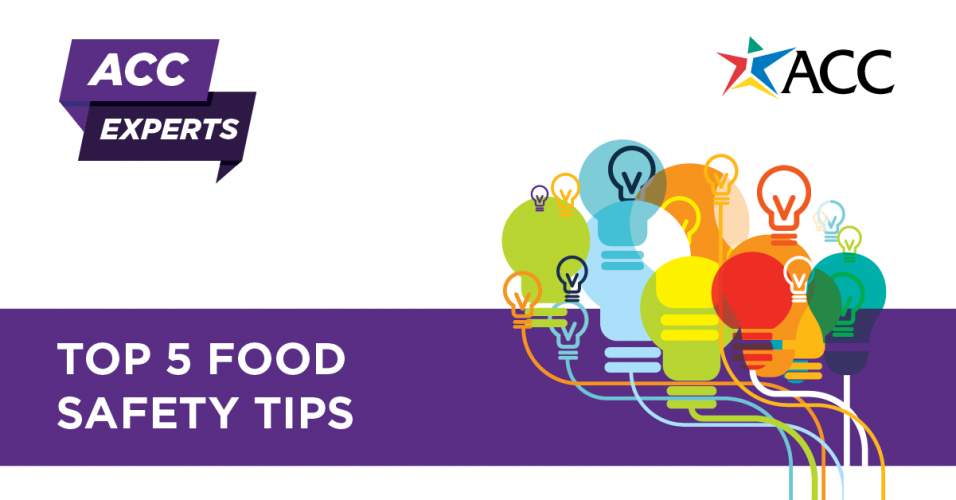ACC Experts: Five things to know about food safety
Written by: Jessica Carrales, ACC Culinary Arts Assistant and Student
December is Worldwide Food Service Safety Month which puts a focus on keeping food safe. As you prepare any holiday feast or treat, here are the top five things to keep in mind to keep your cooking safe.
The Danger Zone
41⁰ to 135⁰ - This is the temperature range most likely to allow pathogens (organisms that can cause illness) to grow. The most important thing to remember, hot foods must be kept hot, and cold foods must be kept cold. Both need to be kept out of the “Danger Zone” to avoid foodborne illness.
Food Thermometers
Digital food thermometers are ideal for use at home because they don’t require calibration. Always measure the temperature of foods at the thickest part (next to a bone if there is one) to get the most accurate reading. Always clean the probe of your thermometer with hot soapy water, rinse, and allow to air dry.
Proper Thawing
The safest way to thaw food is to thaw it in the refrigerator. Put the item you are thawing on a platter or tray to avoid cross-contamination from drips.
Proper Cooling
If you have hot food that needs to be cooled, you must take precautions to limit the time spent in the “Danger Zone.” To cool a soup or sauce down before storing it in the refrigerator, fill a large bowl (or your sink) with ice and water. Place the container of food into the ice water (but do not submerge), and stir it every few minutes to help cool it down. Another option to cool food quickly is to separate it into smaller containers, which will cool faster than one big container.
Cross-Contamination
Cross-contamination occurs when dangerous bacteria from one food is transferred to another food, for example, if raw chicken juice touches the lettuce you are cutting for your salad. Always prep meats, eggs, and vegetables separately. Wash your cutting boards, knives, and other tools in between cutting meat and vegetables to avoid cross-contamination.
This ACC Experts piece is brought to you by ACC’s Culinary Arts program. ACC offers stackable credentials from certificates that can prepare you for a career change or career advancement to an associate degree that can further increase your employability and help you build a strong foundation for university transfer. ACC’s degree tracks include an Associate of Applied Science: Baking and Pastry and Associate of Applied Science: Culinary Arts. Both programs will be offered at the new ACC Highland Campus Phase 2.
For more information on ACC’s Culinary Arts program and to register for classes starting this spring, visit austincc.edu/culinaryarts.
